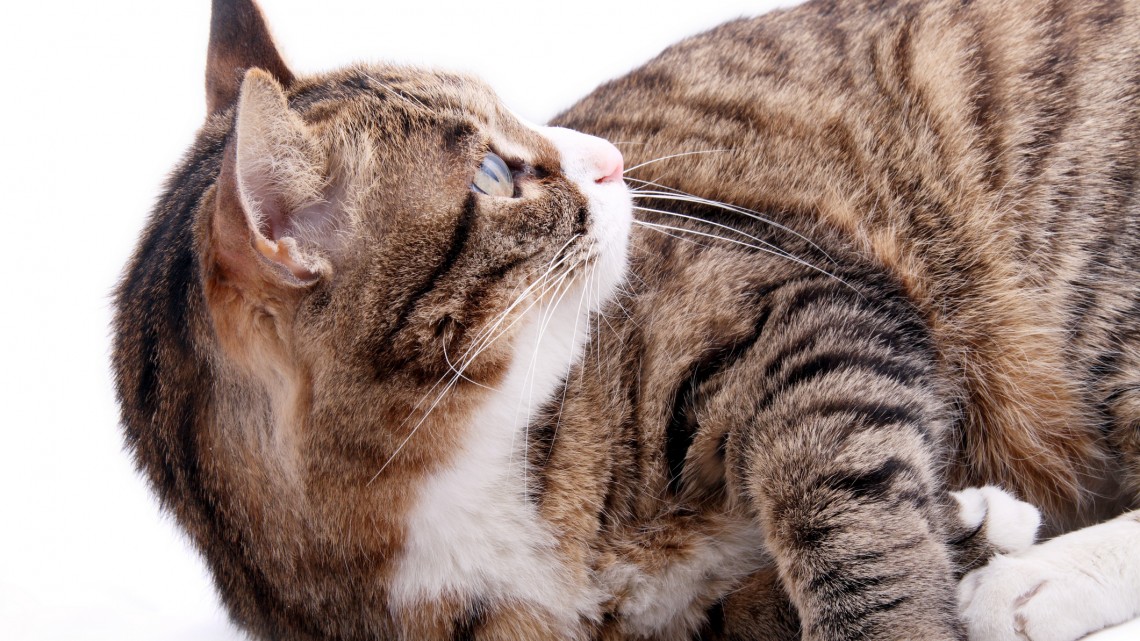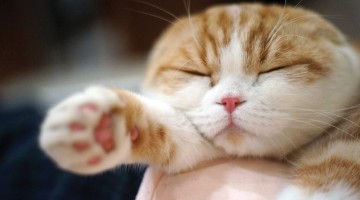It’s not just for people or horses. Chiropractic can also ease feline pain and stiffness and bring the spring back to your kitty’s step.
Cats look so supple and agile, it’s hard to imagine they could ever require chiropractic services. But there are times when they need and benefit from this therapy.
Dr. Daniel David Palmer developed chiropractic over 100 years ago as a system to be used not just on humans, but on any animal with a vertebral system. In the early 1900s, chiropractors were trained to adjust humans, horses, dogs, cats and other animals. Adjusting animals fell out of favor in the 1920s as chiropractors aligned themselves with the human medical system, but it made a resurgence in the 1980s with the founding of a chiropractic school that trained both veterinarians and human chiropractors how to adjust animals. Animal chiropractors are now trained to adjust cats, dogs and horses.
When I studied animal chiropractic, I was told that any animal with a
subluxation needs chiropractic. Subluxation is a chiropractic term for a vertebra that is not moving properly within the spine. The only way to know if a subluxation exists in your cat is to have him or her examined by a veterinarian or chiropractor certified in animal chiropractic.
Subtle signs
As a companion animal veterinarian certified in animal chiropractic, my case load is primarily canine. This is not because dogs require more chiropractic care but because cats are much better at hiding signs of pain and discomfort. Symptoms that your cat may have back pain and needs a chiropractor can include any of the following:
- Stretching excessively (for five to ten minutes) after rising
- Slow moving up or down stairs
- Stiff walking or slow gait
- Inability or increased time to jump up on the couch or bed
- Pain on picking up the cat
- Limping on one leg or dragging toes
- Incontinence or constipation
- Inability to get into the litter box
- Dislike of petting or brushing the back end
- Rolling or flinching skin when touched
- Grinding teeth
- Excess licking when mouth is manipulated
- Excess licking of legs
- Decreased grooming behavior
Many of these signs could signal other problems so your cat should first be evaluated by his or her veterinarian. If your vet is also certified in animal chiropractic, he or she will evaluate the cat’s spine during the examination. If not, you may need a referral to another veterinarian or chiropractor who has been trained in animal chiropractic.
Light touch Cats need to be adjusted differently than any other animal. Many do not like to be held or touched for long periods, so light touch methods are needed. I favor methods used on human babies and small children. Craniosacral therapy and Logan are two different ways of chiropractic adjusting that work well in cats. Some animal chiropractors will use an instrument called an activator. I have not found this helpful with cats as they dislike the sound and the adjust- ment can be painful in an older feline.
It is often difficult to get a cat to relax enough to receive a proper treatment. Ideally, chiropractic adjustments should be done someplace the cat feels comfortable. This is usually his home. Some animal chiropractors will make house calls but usually you have to take your cat to the chiropractor. In a veterinary hospital that offers chiropractic, there is usually a quiet room set aside for this purpose. It is best if this room is away from any other animals, especially barking dogs.
In a veterinary hospital that offers chiropractic, there is usually a quiet room set aside for this purpose.
The cat could receive an adjustment on an exam table but many of my patients prefer a couch, a cushion on the floor or a window seat. Warmed cushions can help soothe even the most reluctant patient. In our practice we will use Rescue Remedy or lavender to help calm the cats. These are sprayed in the room before the cat’s arrival. If a cat is particularly tense, I will use a natural cat pheromone spray on my hands before I touch him.
I like to allow the cat to explore the room and become comfortable before I attempt to touch him. I will use this time to get a thorough history and review any previous medical conditions. By watching the cat walk around the room, I can assess if there is any lameness or stiffness. When it comes to adjusting, I will try to move to where the cat is most comfortable. This often means the floor or couch.
Before adjusting a kitty, I like to introduce myself and get to know him a little better. I will run my hands over him, check for areas of heat, and gently palpate for any tender spots and chiropractic subluxations. There are a few relaxation points on the cat’s head that I will massage to help him relax. Once I have determined where his problem lies, I will quickly but gently adjust him. Adjustments are rarely painful. If I encounter a painful area, I may apply a warm towel to relax the muscles before I attempt to adjust it.
Overall, most cats enjoy chiropractic adjustments and respond quite well to them. Normally a cat will need a series of adjustments one week apart for three to five weeks. Some cases require more and some less. Cats are naturally flexible, with longer thinner vertebrae than dogs, so they seem to respond to chiropractic more rapidly.
In my practice, I have treated cats with kidney failure, diabetes, urinary incontinence, seizures, arthritis, injuries and constipation, all with chiropractic. Although it may not be the only therapy for these patients, it has helped improve the quality of life and recovery time for many. Chiropractic is a very powerful tool for insuring wellness in any feline patient.







No Comment